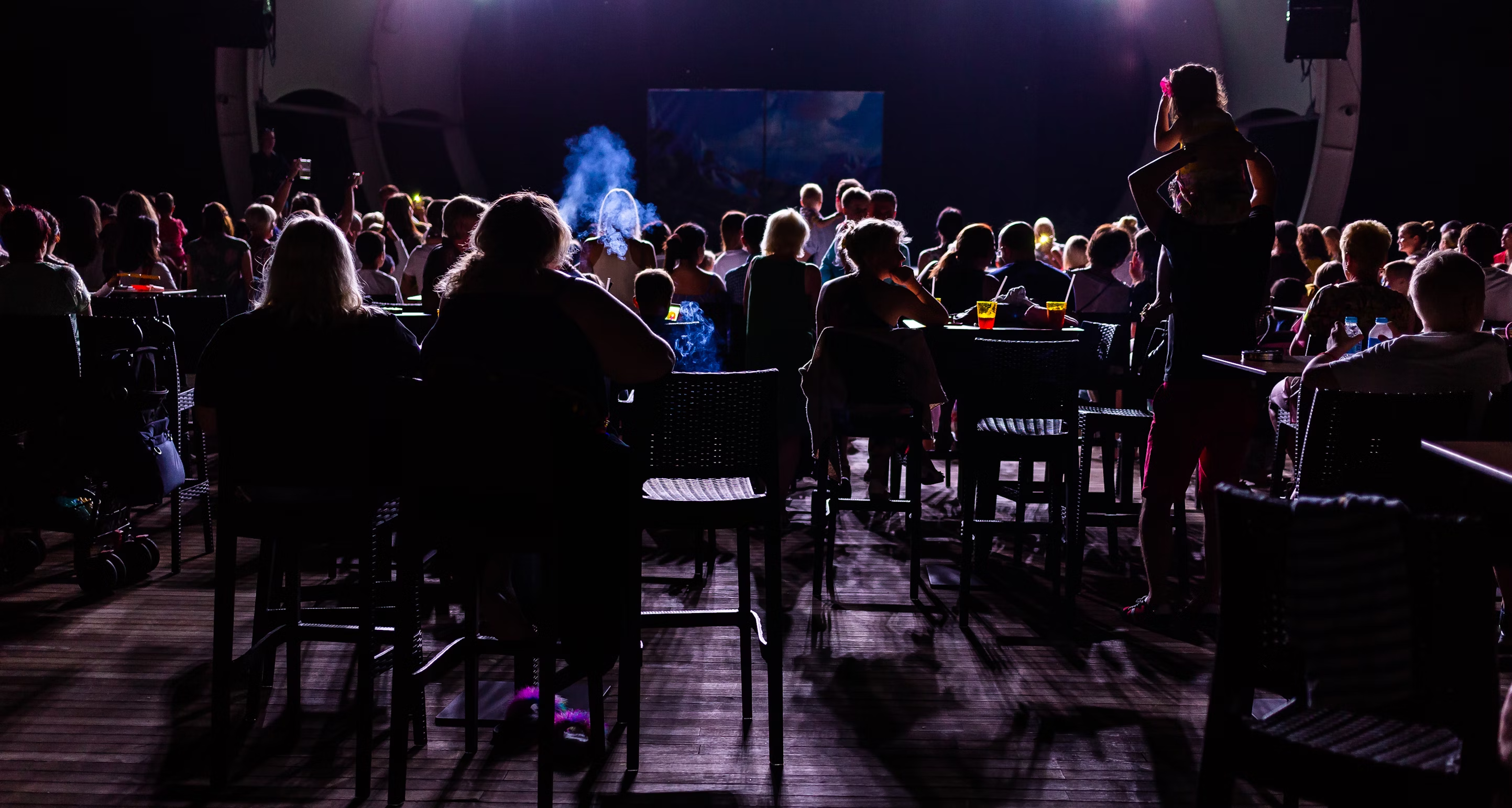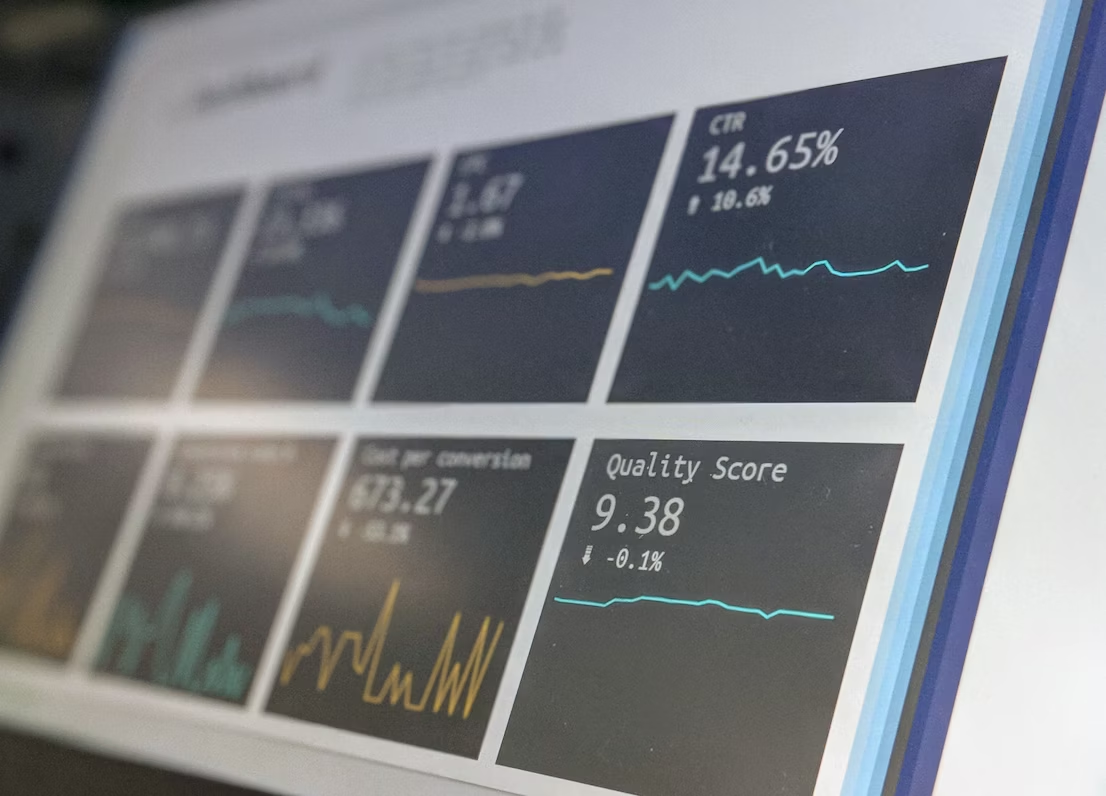Introduction
Theatre has a rich history spanning thousands of years, from its origins in ancient Greek tragedy and comedy to the emergence of modern drama in the late 19th century. While theatre has evolved considerably over time, the basic elements remain the same - performers staging a story before a live audience. However, the industry faces evolving challenges today. As entertainment options have proliferated, competition for audiences has intensified. The COVID-19 pandemic also dealt a huge economic blow. Faced with slumping ticket sales, many theaters are being forced to find new ways to attract audiences, leverage technology, and strengthen community ties. This article provides an overview of major developments in theatre history and practical strategies for theaters looking to adapt and thrive in the modern age. The aim is to provide directors, dramaturgs and other theatre professionals with actionable ideas to drive ticket sales, produce relevant shows, and keep their theaters financially sustainable. Read on to learn key lessons from theatre's past and present that can help shape its future.
Brief History of Theatre
Theatre has its origins in ancient Greece, around 600 BCE. The earliest known playwrights were Aeschylus, Sophocles, and Euripides, and many of their works are still performed today. Greek plays were performed in outdoor amphitheaters and often incorporated dance, religious rituals, and music.
Theatre in ancient Rome adopted much from the Greeks, expanding the size of productions and establishing more elaborate stagecraft techniques. Well-known Roman playwrights included Plautus and Terence.
During the Middle Ages, theatre declined in Europe but flourished in other parts of the world. Medieval theatre mostly took the form of religious morality plays. Theatre started to re-emerge during the Renaissance, inspired by a rebirth of interest in classical Greek and Roman culture. Playwrights like Shakespeare pioneered new styles of theatre in England.
Modern theatre really came into its own in the late 19th and early 20th centuries. New playwriting styles, acting techniques, and theatrical technologies transformed the possibilities of the medium. Major figures like Henrik Ibsen, Anton Chekhov, and George Bernard Shaw pioneered what we think of as modern theatre.
Challenges Facing Modern Theaters
Modern theater companies face a number of challenges in today's entertainment landscape. One major issue is declining ticket sales. As audiences have more at-home options like movies, TV, and streaming services, fewer people are attending live theater productions. According to this article, theater attendance rates have dropped significantly in recent decades. Theaters must compete with these convenient alternatives to get people out of their homes and into seats.
Another financial hurdle for theaters is the high cost of putting on productions. Quality sets, costumes, lighting, and other elements do not come cheap. Paying performers, backstage crew, and other staff also adds up quickly. With less revenue from ticket income, many theaters struggle to cover these mounting expenses. Some have cut back on production values, while others rely more heavily on donors and grants. High costs make it difficult to take risks on new or experimental works.
The combination of waning ticket sales and high production overhead creates an uncertain economic environment for today's theaters. To survive and thrive, they may need to rethink their business models, diversify their programming, and find innovative ways to attract 21st-century audiences. But with creativity and commitment, theaters can meet these modern challenges while preserving the vital performing arts tradition.
Transitioning to E-Ticketing
E-ticketing systems offer many benefits for modern theaters including reduced costs, improved efficiency, and better customer experience. With e-ticketing, patrons can purchase tickets online and simply show their phone at the venue for admission, eliminating the need for printing physical tickets. This saves theaters money on paper and printing while also reducing waste.
E-ticketing also enables frictionless mobile purchases, allowing patrons to securely buy tickets anytime, anywhere right from their phones. Leading e-ticketing providers like E-Ticketing System offer white label mobile apps for iOS and Android with robust features like seat selection maps, QR code validation, and integrated payment processing. These mobile apps help theaters drive more convenience-focused sales.
Integrations are another key advantage of e-ticketing systems. Platforms can connect with theater CRM, email marketing, and social media tools to enable targeted promotional campaigns. For example, theaters can offer discounts to email subscribers or customize recommendations based on past purchases. Overall, e-ticketing provides modern theaters with opportunities to streamline operations, improve customer experience, and grow ticket sales through online channels.
Driving Ticket Sales
Theater companies must get creative in driving ticket sales in the modern age. Some strategies include:
- Pricing strategies - Offering flexible pricing like early bird discounts, student/senior discounts, season passes, subscription packages, dynamic pricing, etc. can help boost sales. Evaluate pricing regularly. 12 Proven Ways to Increase Ticket Sales
- Targeted promotions and discounts - Run special discounts for specific groups/demographics. Offer promo codes through email lists and social media. Partner with local businesses on co-promotions.
- Strong online presence - Ensure your website is mobile-friendly, easy to navigate, and enables simple ticket purchases. List events on online calendars and ticket sites. Promote shows heavily on social media with videos and photos. 6 Action Steps to Increase Ticket Sales
- Contests and giveaways - Free ticket giveaways create buzz and expand your reach. Contests are another way to engage audiences.
- Events and experiences - Hosting special events like season launch parties, trivia nights, talkbacks etc. both promote your shows and offer additional revenue opportunities.
- Direct outreach - Emails, mailers, phone calls to previous ticket buyers to inform them of the new season. Offer subscriptions.
- Group sales - Reach out to schools, community groups, businesses, retirement communities etc. to organize bulk ticket sales.
The key is using multiple techniques simultaneously to drive sales rather than relying on one strategy alone. Testing different price points and promotions allows you to determine what resonates most with your particular audience.
Producing Relevant Shows
Theater companies today face the challenge of producing shows that resonate with modern audiences while still honoring the classics. Careful title selection, diverse casting, and a focus on quality over quantity are key strategies for success.
When selecting titles, look for stories that connect to current social issues and themes that today's audiences can relate to. For example, Lin-Manual Miranda's Hamilton captured the cultural zeitgeist by telling the story of America's founding through hip-hop and a multicultural cast.
In casting shows, prioritize diversity and representation on stage. Audiences want to see themselves reflected in the stories being told. Nontraditional or color-conscious casting can breathe new life into classic works.
Finally, carefully evaluate each production from start to finish. Focus resources on a few high quality shows per season rather than many average productions. Quality over quantity keeps audiences excited to return.
Adapting Classic Works
Adapting classic works for the modern stage can be a rewarding yet challenging endeavor. The goals are to make the play feel fresh and modern while still maintaining the core integrity of the original (From Page to Stage: Adapting Novels for Theatre).
Some techniques for modernizing include updating the setting, dialogue, and other elements. For example, a director might take a Shakespeare play and set it in a contemporary context. This allows the audience to relate more directly, while Shakespeare's language and storyline remain intact (Adaptation and Storytelling in the Theatre).
However, care must be taken not to alter the fundamental essence and motifs of the play. The adapted work should retain the core messages, character arcs, imagery, and other key components. Modifications should serve to enhance the audience's connection and understanding, not to radically reinterpret the playwright's vision.
With thoughtfulness and creativity, classics can be retold in ways that make them thrillingly current. Theatres willing to take risks and trust the strength of these enduring works will be rewarded with productions that successfully bridge classical and contemporary.
Supporting New Writing
Theatre has always relied on new writing to stay creative and relevant. While producing established classics certainly has merit, theatres must also make an effort to develop and showcase emerging talent. As tastes, social issues, and technologies evolve, fresh theatrical works provide valuable perspective and narrative innovation.
There are several strategies theatres can employ to foster new writing:
- Commission original plays or musicals catered to your company or community. Work directly with playwrights to cultivate ideas and provide artistic guidance. Offer commissions through a formal submission process or by invitation.
- Host playwriting residencies and workshops. Provide space, resources, and mentorship for promising writers to workshop in-progress scripts. Collaborate throughout the creative process.
- Organize festivals or readings of new work. Curate selections from open submissions or by solicitation to share excerpts with audiences. Gather feedback but avoid setting unrealistic expectations for full productions.
- Partner with emerging voices. Reach out tounknown talents from diverse backgrounds. Prioritize potential over credits. Enable access and learning opportunities.
- Establish dedicated production funds. Earmark budget specifically for producing new plays each season. This demonstrates an ongoing commitment beyond sporadic initiatives.
- Submit compelling grant proposals. Leverage resources from government, foundations and organizations like the Venturous Theater Fund that exist to fund theatres producing new work.
The future of theatre relies on identifying and elevating new perspectives and voices. Make developing the next generation of playwrights an integral, ongoing part of your mission.
Leveraging Technology
Theater productions have greatly benefited from adopting new technologies. Digital set designs created with 3D modeling software allow designers to visualize and test sets before physically building them. Tools like Vectorworks and AutoCAD streamline drafting and save time over hand-drawn designs.
Online collaboration tools have become invaluable for rehearsals, especially during the COVID-19 pandemic. Video conferencing platforms like Zoom allow directors to run remote rehearsals when in-person gatherings are limited. Shared online spaces like Dropbox or Google Drive enable creators to share scripts, notes, and videos securely.
Streaming shows online has expanded access for modern audiences. Theatrical productions can reach viewers beyond their local community through services like BroadwayHD. Some productions have opted for a hybrid model, with both in-person and streaming options. While online shows cannot fully replace live performances, streaming provides more flexibility and inclusiveness.
Overall, theaters leveraging modern technology and digital tools can work smarter, enhance productions, and reach wider audiences. Adaptability and an openness to experiment will be key strengths moving forward.
Engaging Younger Audiences
Younger audiences are crucial to the future of theater. As several studies have shown, interest in live theater tends to decline after young adulthood. To combat this trend, theaters must make engaging younger viewers a priority through student discounts, social media outreach, and relatable productions.
Offering discounted ticket prices to students and young professionals will make shows more affordable and accessible. Many theaters provide rush tickets and other discounts to make live theater financially viable for younger patrons with limited incomes. Promoting these opportunities on social media and on college campuses spreads awareness to key demographics.
Social media outreach is also vital for connecting with younger generations. Maintaining active social media accounts, promoting upcoming shows, highlighting behind-the-scenes content, and enabling ticket purchases online can help theaters reach wider youth audiences. Social media personalities and influencers may also broaden a theater's appeal.
Programming relatable stories told in a modern, relevant way also attracts younger viewers. Producing new works focused on current issues and experiences draws in audiences seeking theater that reflects modern life and culture. Adaptations of classic plays can connect with younger viewers by drawing parallels between the past and present. Overall, embracing stories and mediums that resonate with young people leads to greater engagement.
Community Partnerships
Building connections with local schools, nonprofits, and community organizations is vital for modern theaters. Partnering with these groups provides opportunities to give back and engage new audiences.
One effective partnership is offering free or discounted tickets for schools and nonprofit groups. For example, Roundabout Theatre has an extensive community program that provides tickets, transportation, and enrichment materials for school groups to see productions. Similarly, 5th Avenue Theatre partners with local nonprofits to provide free tickets for underserved members of the community. These initiatives make theater accessible and expose new generations to the arts.
Theaters can also host open houses, talkbacks, and Q&A sessions. Inviting community partners to special events allows deeper engagement with the art form. Local artists can be invited to lead workshops or give lectures. Theater professionals have valuable insights to share and these collaborations strengthen community ties.
Partnerships should be mutually beneficial for long-term success. Theaters gain new audiences and community groups receive enrichment opportunities. By working together, modern theaters can expand their reach and fulfill their mission as a vital community resource.
Staff Training
A successful theater relies on a well-trained staff that can provide excellent customer service, drive ticket sales, and support diversity, equity and inclusion (DEI) initiatives. Theater managers should prioritize ongoing staff education and skills training.
Customer service training is essential for front-of-house staff who interact directly with patrons. Employees should demonstrate polite, welcoming, and professional behavior. Training can cover communication etiquette, dealing with difficult customers, and ensuring accessibility. Roundabout Theatre's Theatrical Workforce Development Program provides customer service training for usher staff.
Effective ticket sales require a staff skilled in upselling, database management, and digital marketing. Sales training should teach employees how to identify customer needs, highlight production values, and leverage promotions and packages to boost revenue. Partnerships with local schools and businesses can also expand the theater's reach and customer base.
Finally, consistent DEI education promotes an inclusive environment for both employees and patrons. Staff should complete training on unconscious bias, diversity hiring practices, and culturally-responsive programming. Leadership development initiatives can groom underrepresented groups for management roles. A diverse staff and an equity-focused work culture signal that the theater welcomes everyone.
Financial Planning
Financial planning and management is critical for the success of any modern theater. With rising production costs and competition from other forms of entertainment, theaters must get creative with funding sources and budgeting.
Fundraising efforts like sponsorships, donations, and grants can provide theaters with needed capital for expanding programming, renovations, or special projects. Forming partnerships with corporate sponsors or local philanthropists allows theaters to tap into new revenue while providing promotional value to sponsors. Theaters can also apply for arts-related grants from government agencies, foundations, and non-profits. Diversifying fundraising approaches is key.
Careful financial management and planning helps theaters operate efficiently within their budgets. Monitoring cash flow, predicting future expenses, and tracking revenues allows leadership to make informed spending decisions. Exploring new revenue opportunities like facility rentals, concessions, classes, and merchandise can also supplement standard income from ticket sales and subscriptions.
With proper funding and smart money management, theaters can sustainably support their ongoing productions and operations. Financial planning is the foundation for all other theater activity.
Safety Protocols
Theatre productions involve many potential safety hazards, so it is critical for theatre professionals to establish and follow clear protocols. This is especially important in the COVID era, as theatres must implement policies to protect actors, crew, and audiences. Some key COVID safety measures include requiring proof of vaccination, availability of high-quality masks, enhanced ventilation, regular testing of cast and crew, and protocols for contact tracing and handling potential exposures.
In addition to COVID policies, theatres should have emergency procedures in place and communicated to all staff. This includes evacuation routes, assembly points, fire drill protocols, handling medical emergencies, weather events, and security threats. Clear signage, accessible exits, and regular drills help ensure a calm, orderly response in an actual emergency.
Accessibility is another key consideration for theatre safety protocols. All audience areas, backstage spaces, and support facilities should comply with ADA standards for accessibility. Things like wheelchair seating areas, ramps/elevators, accessible restrooms, and assisted listening devices allow patrons of all abilities to fully participate. Staff training on accommodating patrons' needs is also important.
Following rigorous, proactive safety protocols allows theatres to focus on their creative work while ensuring a positive experience for all involved. As protocols evolve with public health guidance, continued communication, enforcement, and vigilance are essential.
Conclusion
The challenges facing modern theater are significant, but theaters have a long history of adaptation and innovation. By embracing digital ticketing, data-driven programming, new plays and writers, and creative community partnerships, theaters can stay vital, reach new audiences, and carry on the rich traditions of the art form.
Key takeaways include:
- Digital ticketing through mobile apps and websites can make buying tickets more convenient while providing customer data to help guide programming and marketing. Consider dynamic pricing and subscription packages as well.[1]
- Analyze ticket sales data, demographics, and community trends to develop productions that connect with modern audiences. Both timely, relevant shows and imaginative takes on classics can attract ticket buyers.
- Actively commission and showcase new writing to support living playwrights and develop the theatre canon. Look to untapped communities for fresh voices and perspectives.
- Use technology like projections, live streaming, and social media to enhance productions and build buzz, especially among younger patrons. Offer educational programs to foster new talent and loyal fans.
- Partner with local schools, businesses, charities and arts groups on initiatives like student matinees, fundraising galas, acting workshops, or free events to strengthen community ties and expand reach.
The key is to cherish the past but remain future-focused. The magic of live theater endures if we keep adapting and reimagining how to deliver compelling dramatic experiences. The show must go on!









